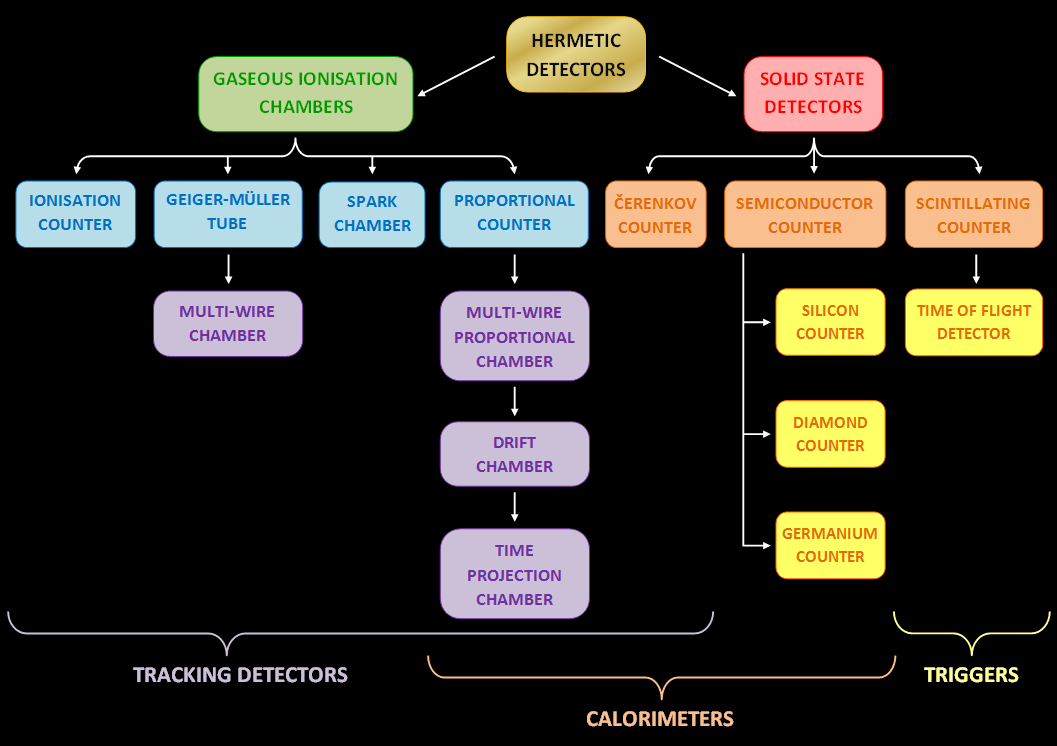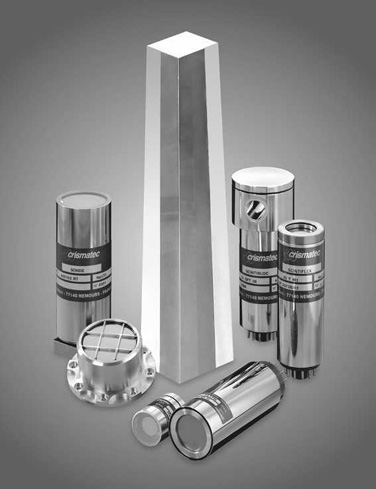|
Time-of-flight Detector
A time-of-flight (TOF) detector is a particle detector which can discriminate between a lighter and a heavier elementary particle of same momentum using their time of flight between two scintillators. The first of the scintillators activates a clock upon being hit while the other stops the clock upon being hit. If the two masses are denoted by m_1and m_2 and have velocities v_1 and v_2 then the time of flight difference is given by :\Delta t = L\left(\frac-\frac\right)\approx \frac(m_1^2-m_2^2) where L is the distance between the scintillators. The approximation is in the relativistic limit at momentum p and c denotes the speed of light in vacuum. See also *Time-of-flight mass spectrometry Time-of-flight mass spectrometry (TOFMS) is a method of mass spectrometry in which an ion's mass-to-charge ratio is determined by a time of flight measurement. Ions are accelerated by an electric field of known strength. This acceleration res ... Particle detectors {{Particle-stub ... [...More Info...] [...Related Items...] OR: [Wikipedia] [Google] [Baidu] |
Particle Detector
In experimental and applied particle physics, nuclear physics, and nuclear engineering, a particle detector, also known as a radiation detector, is a device used to detect, track, and/or identify ionizing particles, such as those produced by nuclear decay, cosmic radiation, or reactions in a particle accelerator. Detectors can measure the particle energy and other attributes such as momentum, spin, charge, particle type, in addition to merely registering the presence of the particle. Examples and types Many of the detectors invented and used so far are ionization detectors (of which gaseous ionization detectors and semiconductor detectors are most typical) and scintillation detectors; but other, completely different principles have also been applied, like Čerenkov light and transition radiation. Historical examples * Bubble chamber * Wilson cloud chamber (diffusion chamber) *Photographic plate ;Detectors for radiation protection The following types of particle detec ... [...More Info...] [...Related Items...] OR: [Wikipedia] [Google] [Baidu] |
Elementary Particle
In particle physics, an elementary particle or fundamental particle is a subatomic particle that is not composed of other particles. Particles currently thought to be elementary include electrons, the fundamental fermions (quarks, leptons, antiquarks, and antileptons, which generally are matter particles and antimatter particles), as well as the fundamental bosons ( gauge bosons and the Higgs boson), which generally are force particles that mediate interactions among fermions. A particle containing two or more elementary particles is a composite particle. Ordinary matter is composed of atoms, once presumed to be elementary particles – ''atomos'' meaning "unable to be cut" in Greek – although the atom's existence remained controversial until about 1905, as some leading physicists regarded molecules as mathematical illusions, and matter as ultimately composed of energy. Subatomic constituents of the atom were first identified in the early 1930s; the electron and the proton ... [...More Info...] [...Related Items...] OR: [Wikipedia] [Google] [Baidu] |
Time Of Flight
Time of flight (ToF) is the measurement of the time taken by an object, particle or wave (be it acoustic, electromagnetic, etc.) to travel a distance through a medium. This information can then be used to measure velocity or path length, or as a way to learn about the particle or medium's properties (such as composition or flow rate). The traveling object may be detected directly (direct time of flight, dToF, e.g., via an ion detector in mass spectrometry) or indirectly (indirect time of flight, iToF, e.g., by light scattered from an object in laser doppler velocimetry). Overview In electronics, one of the earliest devices using the principle are ultrasonic distance-measuring devices, which emit an ultrasonic pulse and are able to measure the distance to a solid object based on the time taken for the wave to bounce back to the emitter. The ToF method is also used to estimate the electron mobility. Originally, it was designed for measurement of low-conductive thin films, later adj ... [...More Info...] [...Related Items...] OR: [Wikipedia] [Google] [Baidu] |
Scintillator
A scintillator is a material that exhibits scintillation, the property of luminescence, when excited by ionizing radiation. Luminescent materials, when struck by an incoming particle, absorb its energy and scintillate (i.e. re-emit the absorbed energy in the form of light). Sometimes, the excited state is metastable, so the relaxation back down from the excited state to lower states is delayed (necessitating anywhere from a few nanoseconds to hours depending on the material). The process then corresponds to one of two phenomena: delayed fluorescence or phosphorescence. The correspondence depends on the type of transition and hence the wavelength of the emitted optical photon. Principle of operation A scintillation detector or scintillation counter is obtained when a scintillator is coupled to an electronic light sensor such as a photomultiplier tube (PMT), photodiode, or silicon photomultiplier. PMTs absorb the light emitted by the scintillator and re-emit it in the form o ... [...More Info...] [...Related Items...] OR: [Wikipedia] [Google] [Baidu] |
Time-of-flight Mass Spectrometry
Time-of-flight mass spectrometry (TOFMS) is a method of mass spectrometry in which an ion's mass-to-charge ratio is determined by a time of flight measurement. Ions are accelerated by an electric field of known strength. This acceleration results in an ion having the same kinetic energy as any other ion that has the same charge. The velocity of the ion depends on the mass-to-charge ratio (heavier ions of the same charge reach lower speeds, although ions with higher charge will also increase in velocity). The time that it subsequently takes for the ion to reach a detector at a known distance is measured. This time will depend on the velocity of the ion, and therefore is a measure of its mass-to-charge ratio. From this ratio and known experimental parameters, one can identify the ion. Theory The potential energy of a charged particle in an electric field is related to the charge of the particle and to the strength of the electric field: where ''E''p is potential energy, ' ... [...More Info...] [...Related Items...] OR: [Wikipedia] [Google] [Baidu] |


